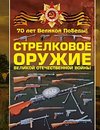
-
 Anglický jazyk
Anglický jazyk
Minoan, Rise and Fall
Autor: A. J. Carmichael
Crete was inhabited by Neolithic cave dwellers around 7000 BC. Aside from their wood, stone, and bone tools, they also wore simple cloth, and their clothing was made from wood, stone, and bone. There is a good chance they came from Asia Minor, Syria, Palestine,... Viac o knihe
Na objednávku
29.30 €
bežná cena: 33.30 €
O knihe
Crete was inhabited by Neolithic cave dwellers around 7000 BC. Aside from their wood, stone, and bone tools, they also wore simple cloth, and their clothing was made from wood, stone, and bone. There is a good chance they came from Asia Minor, Syria, Palestine, or North Africa. Bull cults may have provided a clue to their origins in Neolithic Anatolia. Development was almost imperceptibly slow through migrations, influences, or internal dynamics over the next three thousand years. Domestic animals and essential crops were used in elementary agriculture. In addition to better-made domestic utensils and clay figurines of humans, animals, and pregnant women, pottery (the oldest samples found beneath the Palace at Knossos) became more sophisticated. The island of Milos also supplied obsidian. As the era wore on, simple rectangular mud-brick huts were built with increasing skill and complexity, although caves remained inhabited. Knossos was a crucial Neolithic settlement, two remarkable dwellings have been discovered beneath the Central Court, and there is abundant evidence that many other sites of later habitation were utilized at this time - Malia, Festos, Ayia Triadha, Hania area - as well as most of the caves that later became religiously significant. In the Bronze Age Crete was ruled by the Minoans. At the beginning of the twentieth century, Minoan Crete was transformed from myth to archeological reality. The Minoans and their language are still subject to considerable controversy, even over such fundamental details as their identity. Almost everything we know is derived from physical remains, fleshed out somewhat by writings from Classical Greece almost one thousand years after Knossos was destroyed since no written historical records exist from that time. However, the theories about the Minoans can be unified into some consensus, as we shall see below. Fresh discoveries will change this viewpoint radically in the future. The Minoan Civilization flourished in the Middle Bronze Age on the island of Crete in the eastern Mediterranean from c. 2700 BC to c. 1450 BC (following the Palaeolithic and Neolithic periods). The Minoans were a trading civilization that traded throughout the Eastern Mediterranean, as far north as Britain and as far east as Mesopotamia. The Minoans imported a wide variety of raw materials and manufactured goods from other civilizations, and then they exported their own products, including olive oil, wine, pottery, furniture, perfumes, and jewellery. According to archaeological evidence, the two palaces on the island of Crete at Knossos and Phaistos are considered the largest surviving palaces from antiquity; both were built around 1900 BCE.
- Vydavateľstvo: LEARN ALCHEMICAL PRESS
- Rok vydania: 2022
- Formát: Paperback
- Rozmer: 229 x 152 mm
- Jazyk: Anglický jazyk
- ISBN: 9798215823378






 Ruský jazyk
Ruský jazyk 





